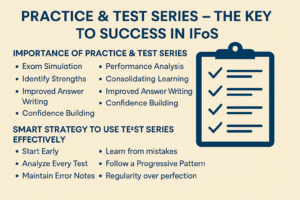Introduction
The Individual Obstacles task in the SSB Interview is a test of your physical fitness, stamina, courage, and mental determination. Conducted during the GTO (Group Testing Officer) series, this task challenges candidates to complete as many physical obstacles as possible within a set time (usually 3 minutes).
Performing well in Individual Obstacles (IO) not only enhances your chances of selection but also showcases several Officer-Like Qualities (OLQs) such as confidence, courage, endurance, determination, and agility. This article explains the techniques for each obstacle, along with practice methods to help you prepare effectively.
What Are Individual Obstacles in SSB?
In this task, 10 obstacles are laid out, each with a number indicating the points you will score upon successful completion. You are required to attempt as many obstacles as possible within the given time limit—3 minutes. The higher the number on the obstacle, the more difficult it usually is.
Common Individual Obstacles Include:
Jumping Over a Drum or Slide Jump (1 point)
Zig-Zag Balance (2 points)
Burma Bridge (3 points)
Tarzan Swing (4 points)
Double Ditch Jump (5 points)
Commando Walk (6 points)
Tiger Leap (7 points)
Rope Climbing (8 points)
Wall Jump (9 points)
Monkey Crawl (10 points)
Techniques to Master Individual Obstacles
1. Warm-Up Is Key
Always stretch and warm up before attempting obstacles.
Focus on cardio, joint flexibility, and breathing exercises.
2. Know the Rules
You must complete each obstacle fully to get the points.
If you fail one, move on quickly without wasting time.
Repeating the same obstacle is allowed if you have time.
3. Master the Techniques
Jumping Over Drum / Slide Jump
Use momentum, swing arms forward, and land with bent knees to avoid injury.
Zig-Zag Balance
Focus on foot-eye coordination.
Keep arms extended sideways for better balance.
Burma Bridge
Keep your body low and take small, steady steps.
Use arms and legs together for balance.
Tarzan Swing
Hold the rope tightly, take a good swing, and let go at the right moment to land within the marked area.
Double Ditch Jump
Take a strong running start.
Push off with both feet and swing arms for extra thrust.
Commando Walk
Use alternate hands and legs to move across the beam.
Keep your body low for stability.
Tiger Leap
Climb the platform, leap confidently, and catch the rope or net.
Use legs to cushion impact.
Rope Climbing
Use the “lock and push” method: wrap one leg around the rope and push using the other.
Pull with your arms and push with your legs rhythmically.
Wall Jump
Get a good running start.
Use both hands and feet together to climb over.
Ask for practice on similar walls.
Monkey Crawl
Crawl using elbows and knees.
Keep your body close to the surface for stability.
Practice Methods for Individual Obstacles
1. Build Physical Stamina
Run at least 2–5 km daily.
Include sprinting to improve speed and agility.
2. Focus on Functional Fitness
Practice push-ups, pull-ups, burpees, planks, and jumping squats.
Train with ropes, monkey bars, and balance beams.
3. Practice in Realistic Settings
Set up mock obstacles in parks or training grounds.
Use gymnastic ropes, wooden planks, and benches to simulate obstacles.
4. Improve Upper Body Strength
Rope climbing, monkey bars, and pull-ups help with wall jumps and climbs.
Include resistance training twice a week.
5. Time-Based Training
Practice completing all obstacles within 3 minutes.
Gradually increase the number of obstacles in a given time.
6. Mental Preparation
Stay calm under pressure.
Visualize yourself completing all 10 obstacles before you start.
Avoid self-doubt—confidence is half the game.
Common Mistakes to Avoid
Wasting time on a failed obstacle.
Panicking or freezing in the middle of the task.
Ignoring safety—always land safely and avoid rash movements.
Not practicing before the SSB—this is a physically demanding task.
Neglecting fitness in daily routine—regular training is crucial.
Tips from Successful Candidates
Target at least 8–9 obstacles to stand out.
Choose the easier obstacles first, gain confidence, then move to tougher ones.
Maintain positive body language—smile, stay energetic, and show determination.
Conclusion
The Individual Obstacles task is a golden opportunity to display your courage, confidence, and fitness. With consistent practice, focus on the right techniques, and a strong mental attitude, you can conquer all 10 obstacles with ease. Remember, the assessors are watching your approach more than just the result—so give it your best, stay safe, and lead like an officer.
FAQs on Individual Obstacles in SSB
Q1. How many obstacles should I aim to complete?
You should aim for at least 8 or more obstacles. Completing all 10 is ideal but not mandatory.
Q2. Can I repeat the same obstacle?
Yes, if you have time left after completing all or most obstacles, you may repeat any to score more points.
Q3. What happens if I fail an obstacle?
No points will be awarded. It’s best to move on quickly to avoid wasting time.
Q4. Do I need to be an athlete to clear all obstacles?
Not at all. With dedicated physical training, anyone can do well. Focus on agility, coordination, and endurance.
Q5. Are the obstacles the same in all SSB centres?
They are mostly standard, but minor variations may exist across different centres.










